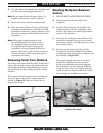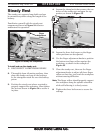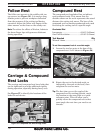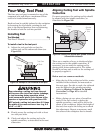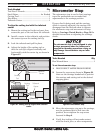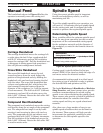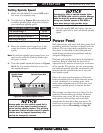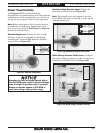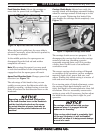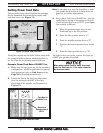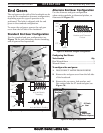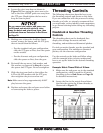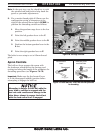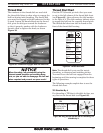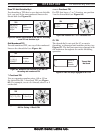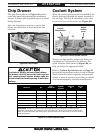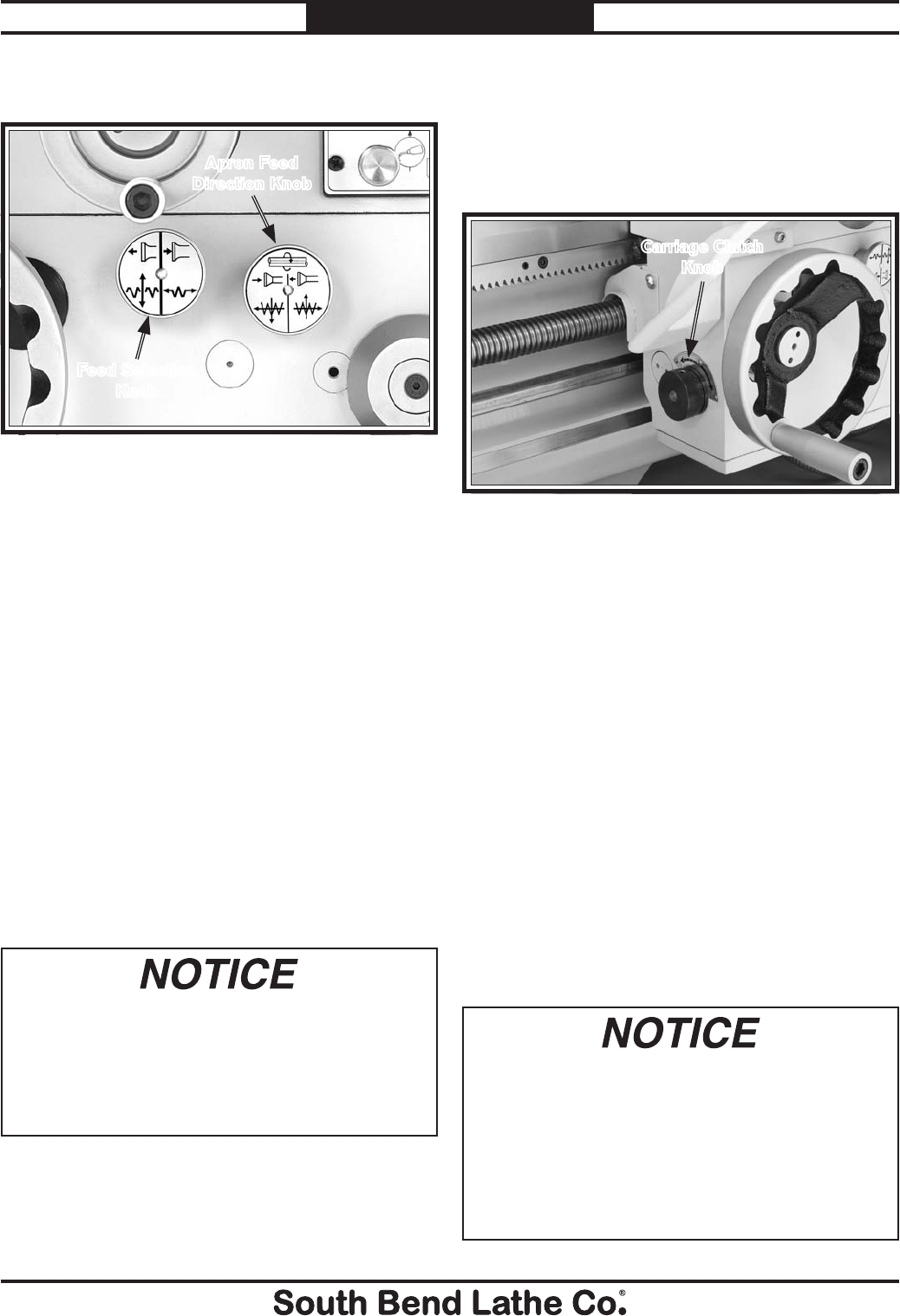
-56-
For Machines Mfg. Since 3/11
EVS Toolroom Lathe w/DRO
OPERATION
Feed Selection Knob: Selects the carriage or
cross slide for power feed (see Figure 70).
Figure 70. Apron feed selection and direction knobs.
Feed Selection
Knob
Apron Feed
Direction Knob
When the knob is pulled out, the cross slide is
selected. Conversely, when the knob is pushed in,
the carriage is selected.
In the middle position, the apron gears are
disengaged from the feed rod and neither
component will move.
Note: When using this control, you may need
to rock the handwheel of the component being
engaged so that the apron gears will mesh.
Apron Feed Direction Knob: Changes power feed
direction (see Figure 70).
The advantage of this knob is that you can
quickly reverse power feed direction while the
spindle is rotating—without having to turn the
lathe off and use the feed direction lever on the
headstock.
Depending on the combined configuration
of the feed direction lever on the headstock
and the feed direction knob on the apron,
the actual direction of power feed may be
different from the printed indicators on the
machine!
Carriage Clutch Knob: Adjusts how easily the
carriage clutch will disengage automatic feeding
when the carriage contacts a feed stop or in the
event of a crash. Tightening this knob all the
way disables the carriage clutch completely. (see
Figure 71).
The carriage clutch serves two purposes: 1) It
disengages the carriage feed when the carriage
contacts a feed stop, providing a precise
repeatable stopping point; and (2) it provides
a safety factor in the event of an accidental
overload or crash.
The correct carriage clutch setting will depend
on variables of the operation, such as workpiece
material, depth of cut, power feed rate, and
others. Finding this clutch setting is a matter of
trial-and-error and experience.
For a starting point of clutch adjustment, rotate
the carriage clutch knob clockwise until it is
tight, then back it off counterclockwise three full
revolutions. This is a reasonably conservative
setting to start with. If necessary, further adjust
the knob for the setting that is right for your
operation.
The carriage clutch will not stop carriage
movement when it is engaged with the
leadscrew for threading.
If the carriage clutch knob is completely tight
(all the way clockwise), it will be disabled,
which will not allow it to help prevent damage
in event of a crash.
Figure 71. Adjustable carriage clutch knob.
Carriage Clutch
Knob



